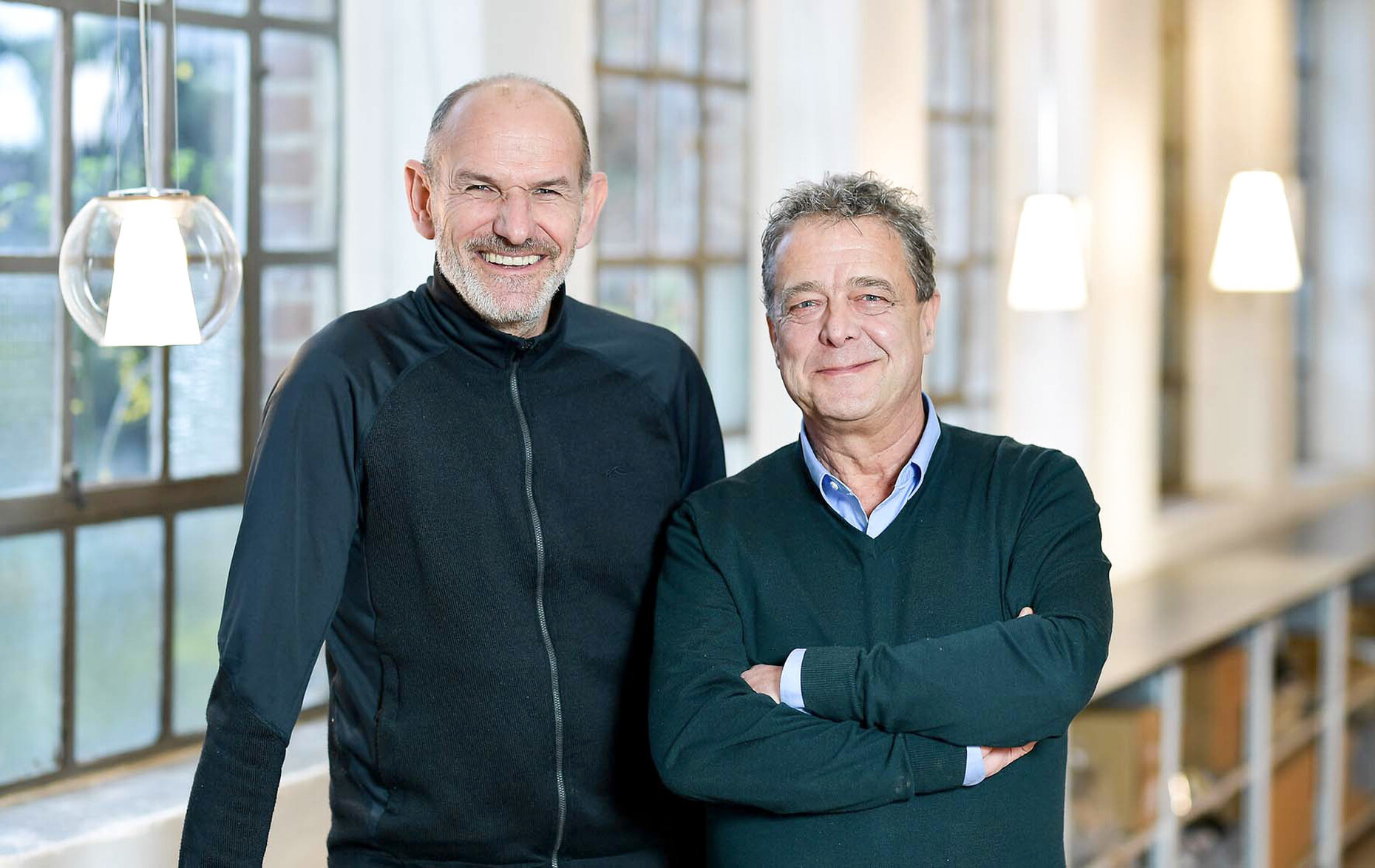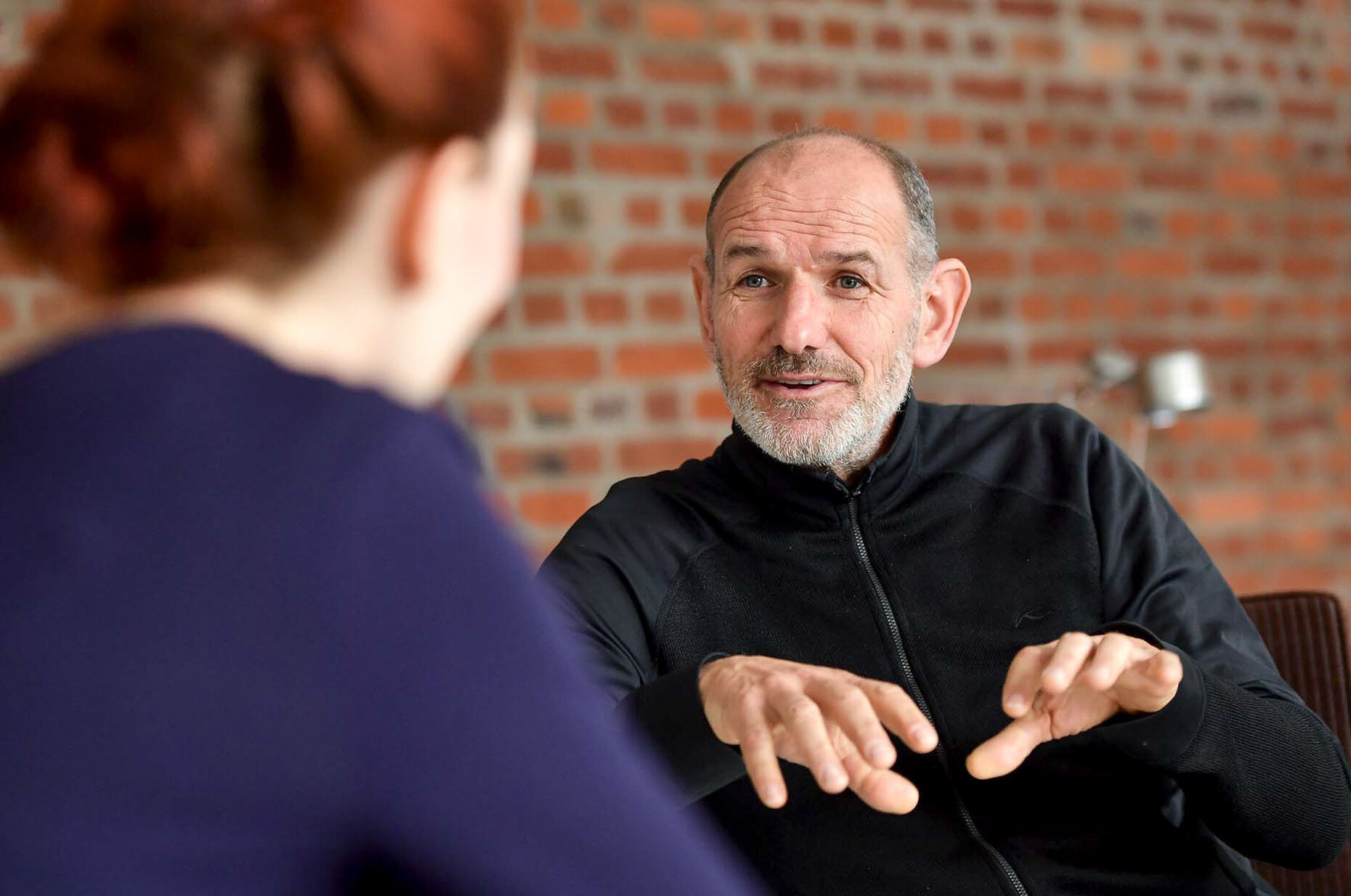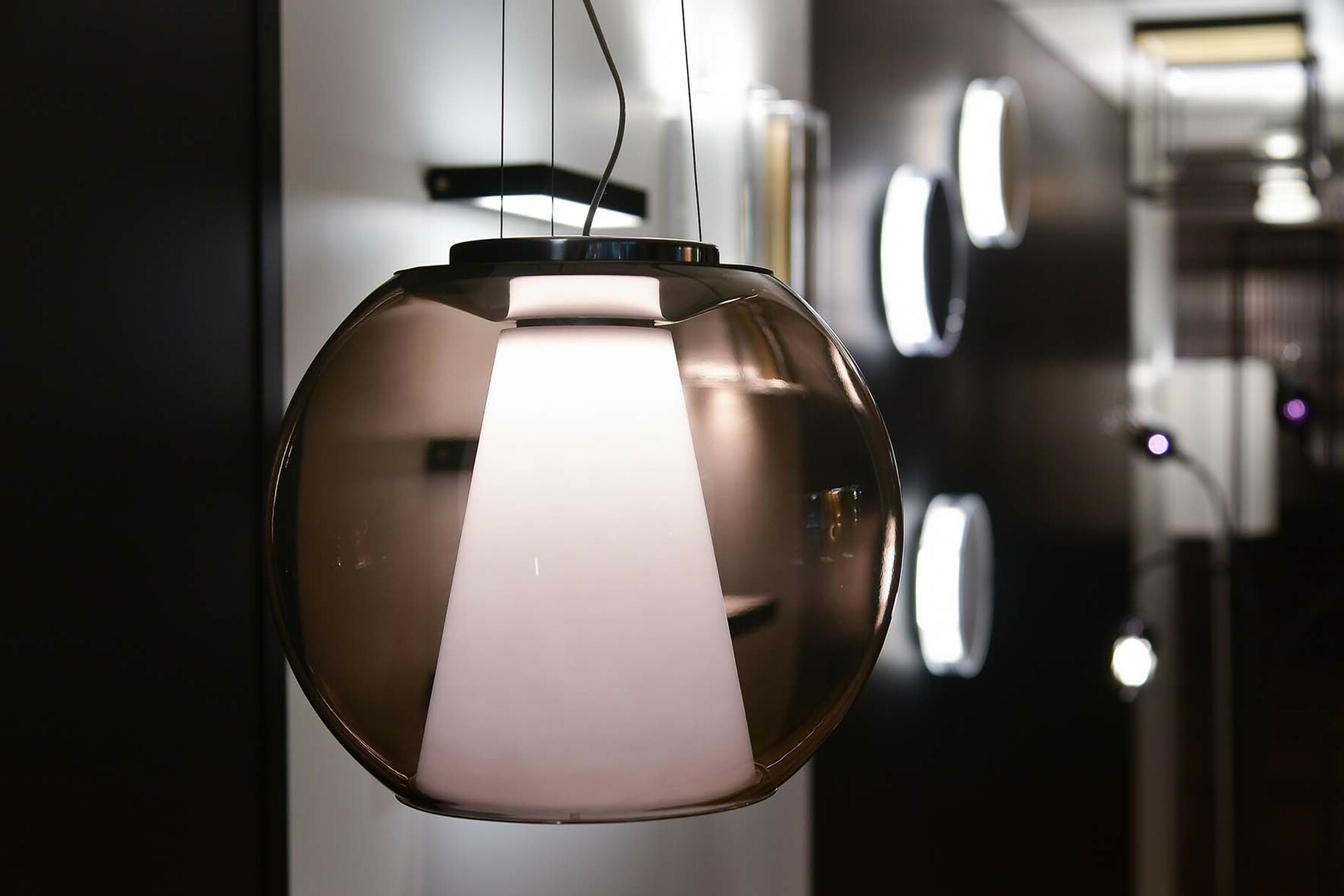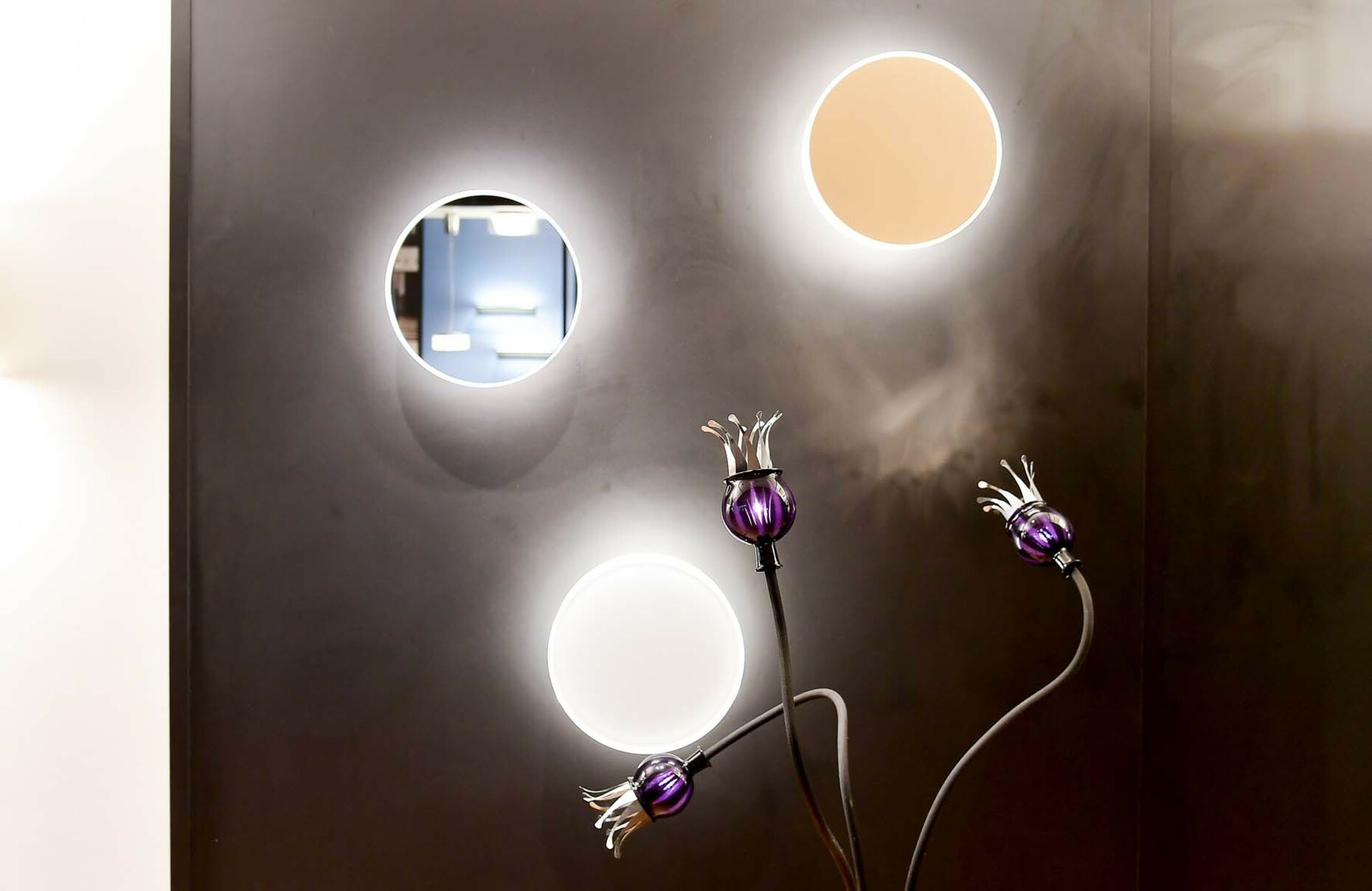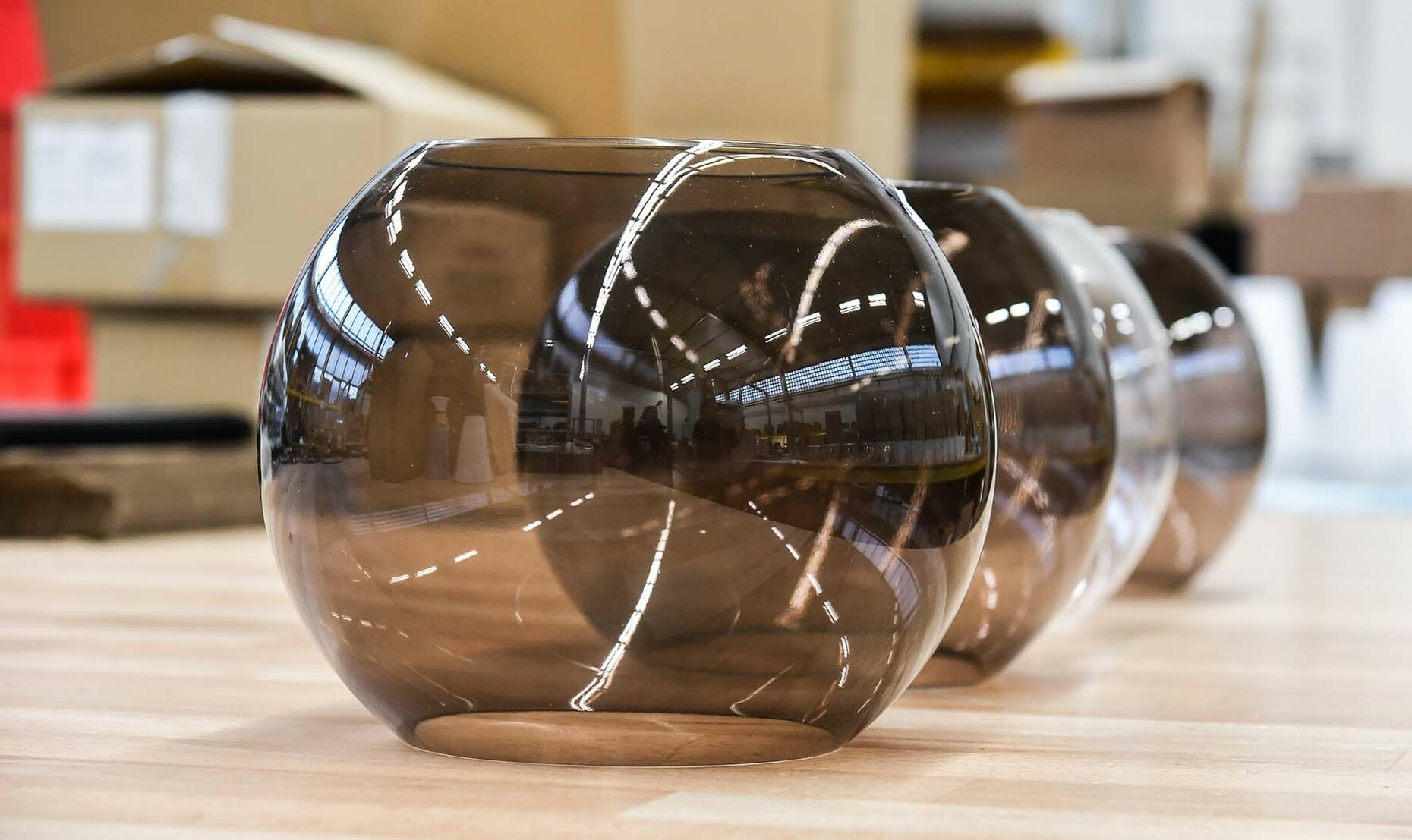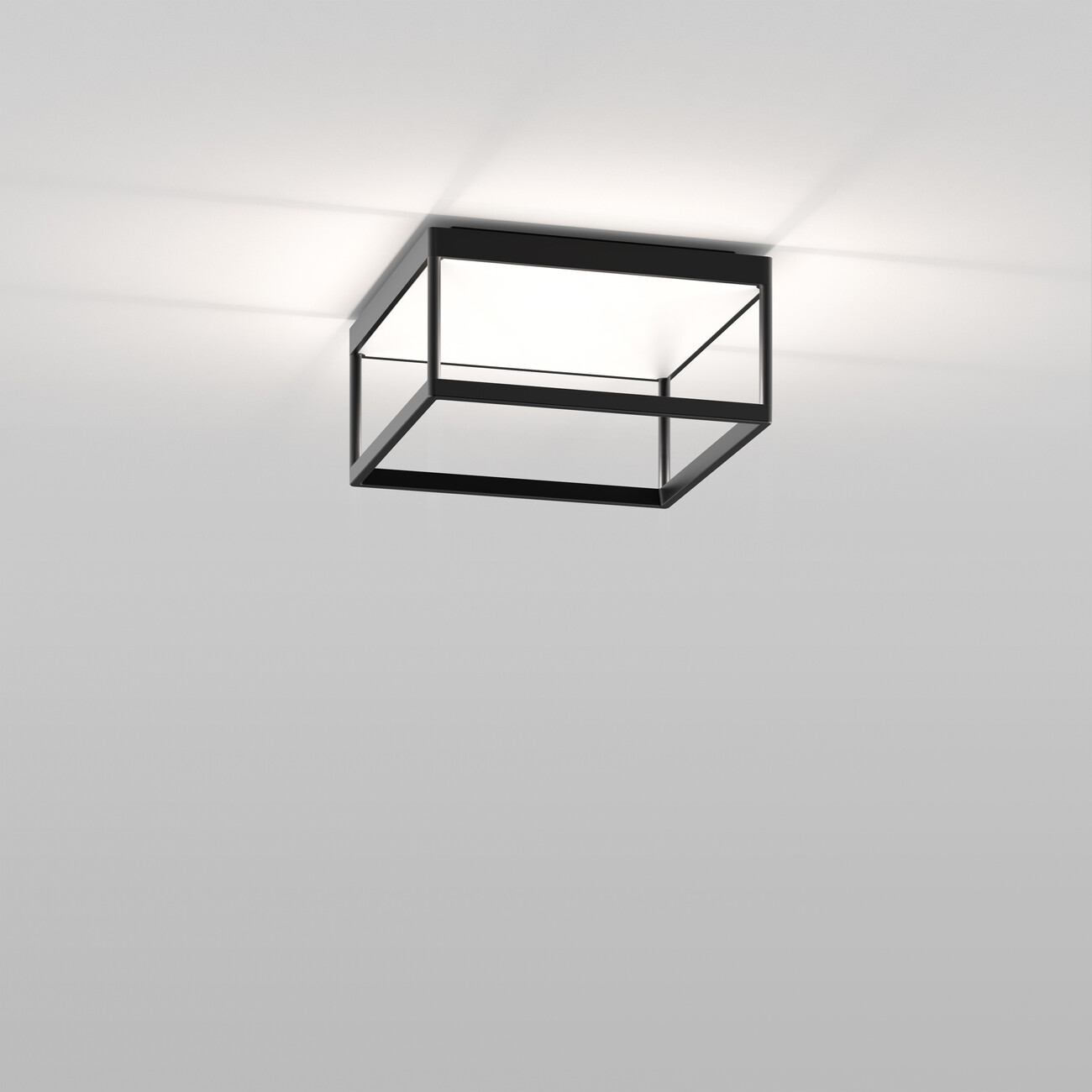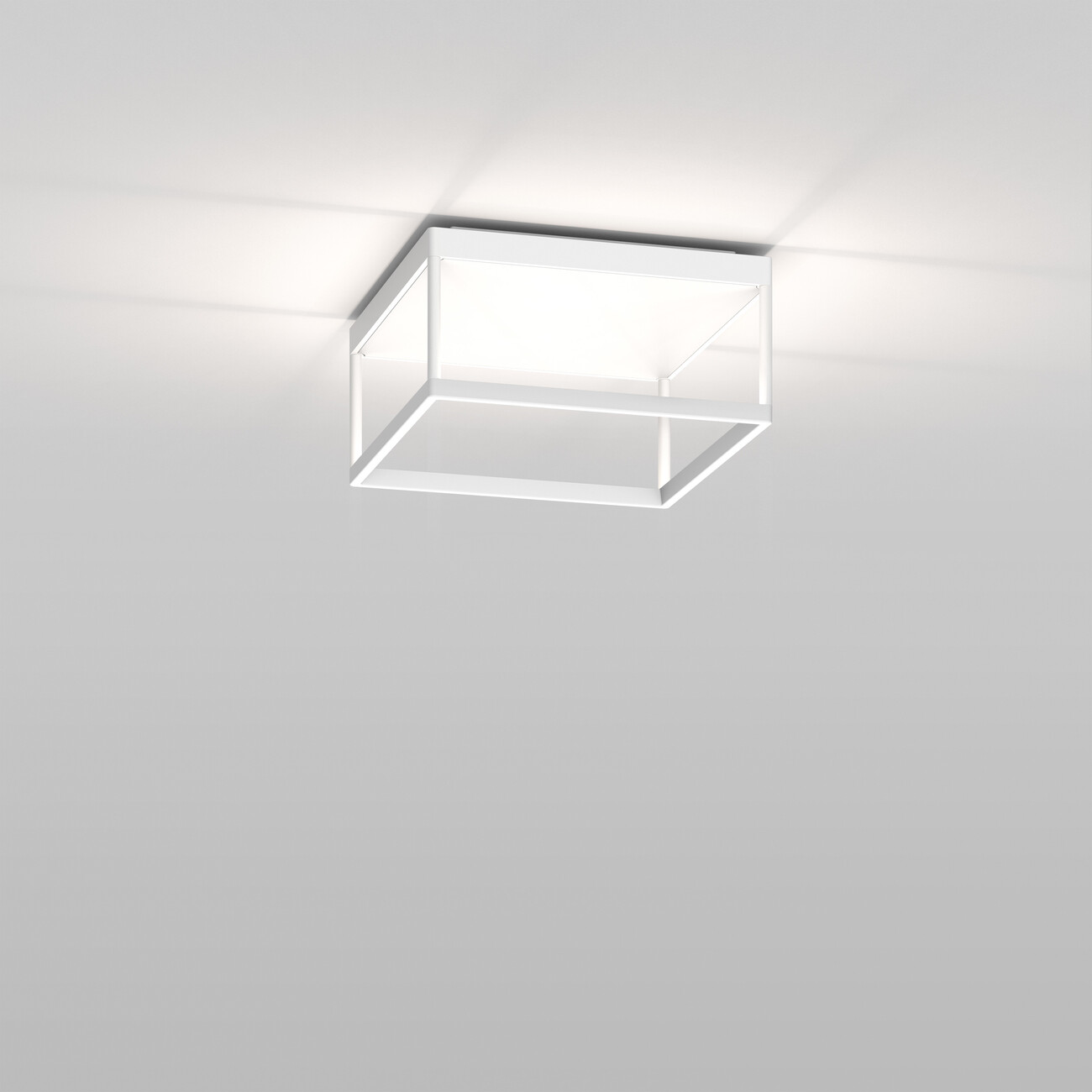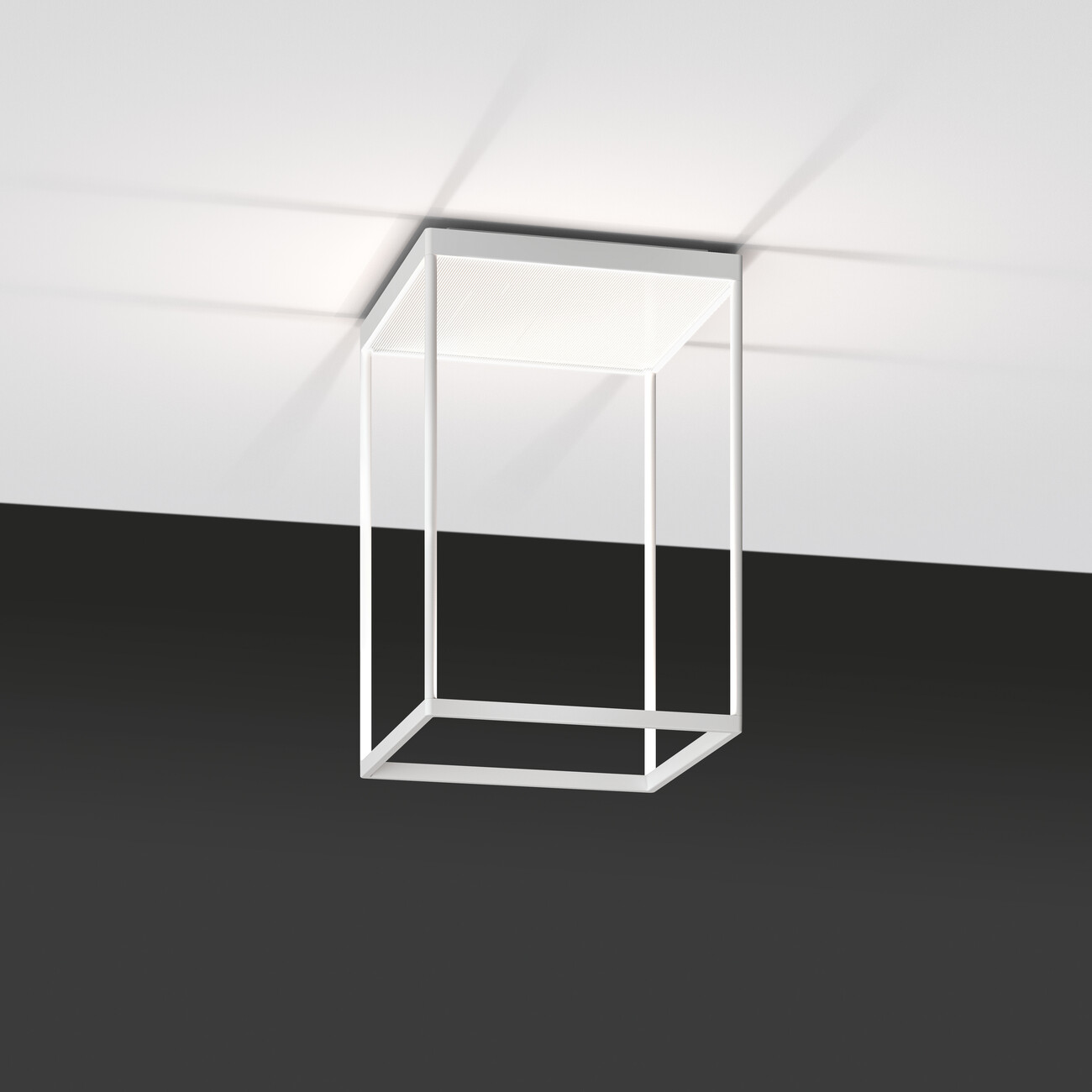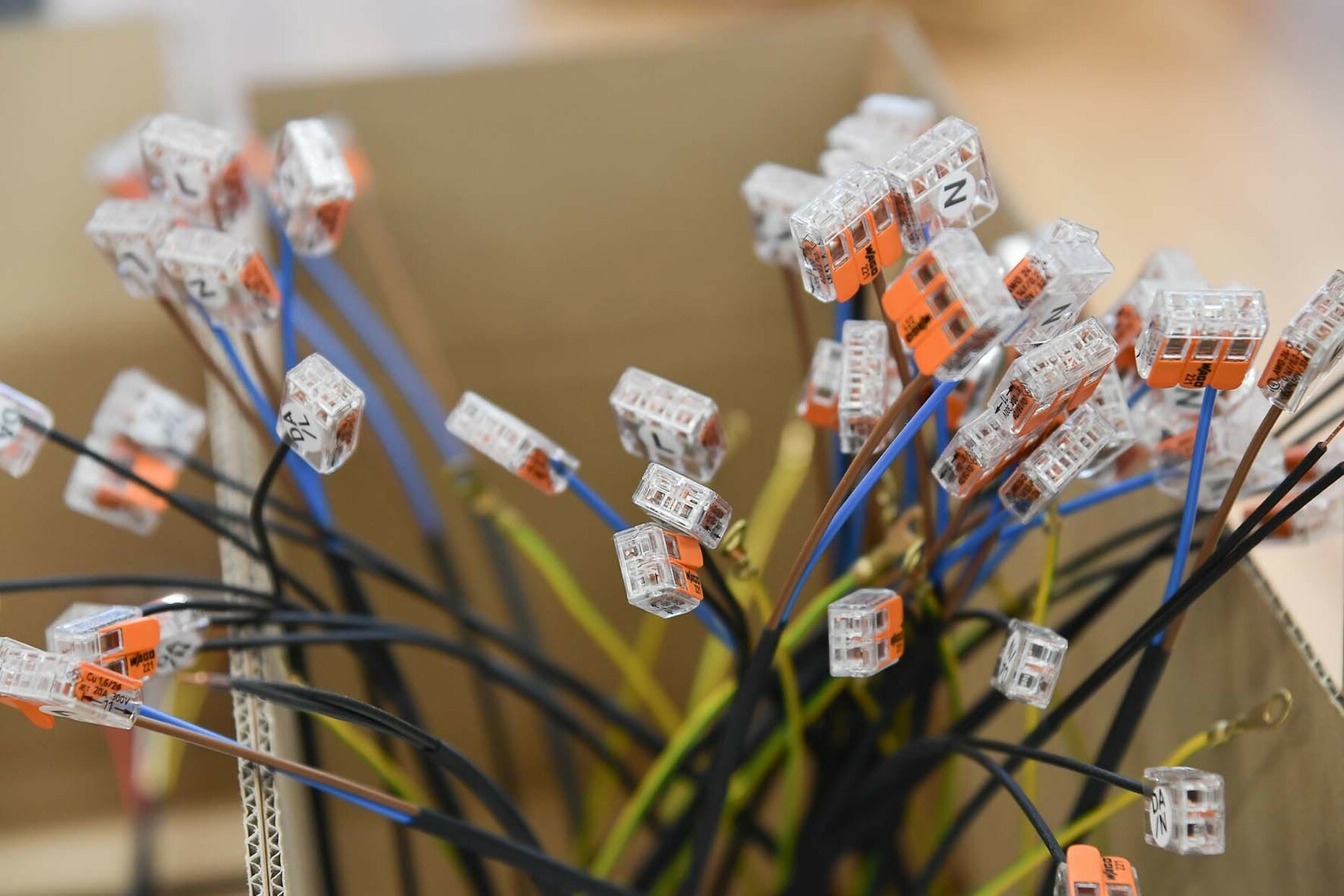Tinkering around
serien.lighting’s roots stretch back to the 1980s, when Manfred Wolf and Jean-Marc da Costa met while studying Design at the Hessen State University of Art and Design (HfG) in Offenbach. The two had independently decided to design a luminaire and their shared fascination with light quickly developed into a friendship. Their experiences complemented each other as far as their future joint path was concerned: da Costa’s understanding of architecture was explained by his father’s profession, he was an architect. Wolf brought manual skills and detailed knowledge of metalworking to bear. As students they were able to use the workshop in which Wolf’s father and grandfather produced metal fittings for suitcases and bags. The conditions there were ideal for them to work on their designs in peace and quiet. “We could bend metal, weld it, shape it, and develop our own tools,” Wolf says. The two of them were never stumped for creative ideas for luminaires – designs such as “LIFT”, “REFLEX”, “QUADRAT” and “STATUS” date from this era. Purist, aesthetic luminaires which very much focus on function and on the light itself. Makingtheir appearance in the middle of the expressive 1980s and at the height of postmodernism, they were almost provocative. By taking such a bold step serien.lighting, which at the time still went by the name of “Serien Raumleuchten”, was making a clear statement – blindly following fashion is just not their thing. “When it comes to whether there is a need for a particular product or not, I prefer to follow my gut feeling,” da Costa explains. The important thing is not to rush into anything. A creative and skilled process will involve as much time as is required in order for the end product to meet our high standards in terms of the interplay between technology, design and function.
This conviction has remained a constant for da Costa and Wolf – from their breakthrough with an exhibition of their first products at Martin Stoll, a furniture store in Cologne, during the imm cologne trade fair in 1985, through to tzhe present day. Nowadays, with a team of 40 staffers, serien.lighting fits out international projects. “We have continued to grow, slowly but surely,” summarizes da Costa. The company is still based in Rodgau. The premises in the charming brick building in which Wolf’s grandfather once puttered around has been adapted to their needs. Whitewashed walls, lots of glass and enough room to display their innovations. Over the course of the years another two halls were added for production and logistics in Rodgau. A new addition to their current range is “REFLEX²”, an advancement of the successful cubic luminaire “REFLEX” which back then started the ball rolling for serien.lighting. The light from the LEDs is shone upwards into the luminaire’s own reflecting surface, from which it is reflected back into the room without the source of the light becoming directly visible. At Light + Building 2020 serien.lighting will also be presenting versions of the luminaire in the shape of standard lamps and wall lights. Another new product in the range is “DRAFT”, whose combination of hand-blown glass sphere and conical internal reflector makes for an elegant contrast. Here too, the source of the light is invisible, as it is concealed deep in the internal reflector.
Under Control
serien.lighting’s luminaires all have one thing in common – the fact that they are easily recognizable. From “POPPY” whose head opens up like a flower to “ZOOM”, a concertina mesh construction which closes to form a circle. The concertina mesh of a wallet was the source of inspiration for the “ZOOM” pendant luminaire, whose diameter can be infinitely adjusted. Practical and self-explanatory – two more characteristics of serien.lighting’s luminaires. Moreover, da Costa and Wolf never lose sight of the user in their creative process, the two always scrutinize all aspects of the handling of their luminaires, right down to the smallest detail. Only when they think their products are ready to go into production is their manufacture farmed out to selected specialist companies. The final assembly and final checks then take place in-house in Rodgau. For serien.lighting, quality control is of the utmost importance. “That is something that we would never entrust to anybody else,” da Costa explains.
Even when collaborating with outside designers such as Benjamin Hopf, Next Space or Yaacov Kaufman, reserving the finishing touch for serien.lighting remains important to both of them. “From the outset, our luminaires must look as if they are built to last,” da Costa says. Remaining constant when times change and the challenges grow is something that serien.lighting has succeeded in for more than 36 years now. Even though the switch in technology from halogen bulbs to LED lamps was not always easy. A large number of their timeless designs were developed around the illuminant, such that comprehensive redesign work has become necessary. “The redesign work and all the new models with LEDs need to achieve the same high degree of perfection that people have come to expect of serien.lighting,” da Costa explains.
Lighting expertise
Uncompromising right down to the smallest detail – an approach that is appreciated not only by end consumers but also and especially by the architects and planners with whom serien.lighting regularly collaborates. The projects for which the two product designers have already modified luminaires or come up with special, customized solutions range from restaurants and hotels to universities and banks, synagogues and museums. In this context, talking the customer’s language and seeing them as their partner is important to da Costa and Wolf. Between the development of the idea and the installation the aim is to promote exchange, thereby setting in motion a creative process which culminates in an individual solution, one that works in the long term. Such as the work lamp “SNAKE” whose slender shape and focused light were designed to ideally suit the requirements of the university library in Freiburg. Its combination of technical minimalism and high-quality means that the lamp will fit in harmoniously with a large number of different environments. By way of example, it has proven very suitable for the Goethe development in Offenbach, the city’s largest new building project, boasting 327 apartments. The project will involve numerous luminaires by serien.lighting – in situations from the stairwells to the bathrooms. “Not decorative objects but functional design which holds its own in everyday life,” Wolf explains. As a matter of course, these durable lighting solutions play a role in sustainability. “Despite all the market pressure, we always develop every product in full. So that it continues to impress, even in the long-term,” clarifies da Costa. For serien.lighting this means simple, well-crafted controls which for all the cutting-edge technology users find easy to operate. Jean-Marc da Costa and Manfred Wolf remain utterly fascinated by light and continue to enjoy tinkering around with new approaches as they light the way into a new decade – something which fits in very well with their slogan “living the light”.
serien.lighting at Light + Building 2020: Hall 1.2, D/31
